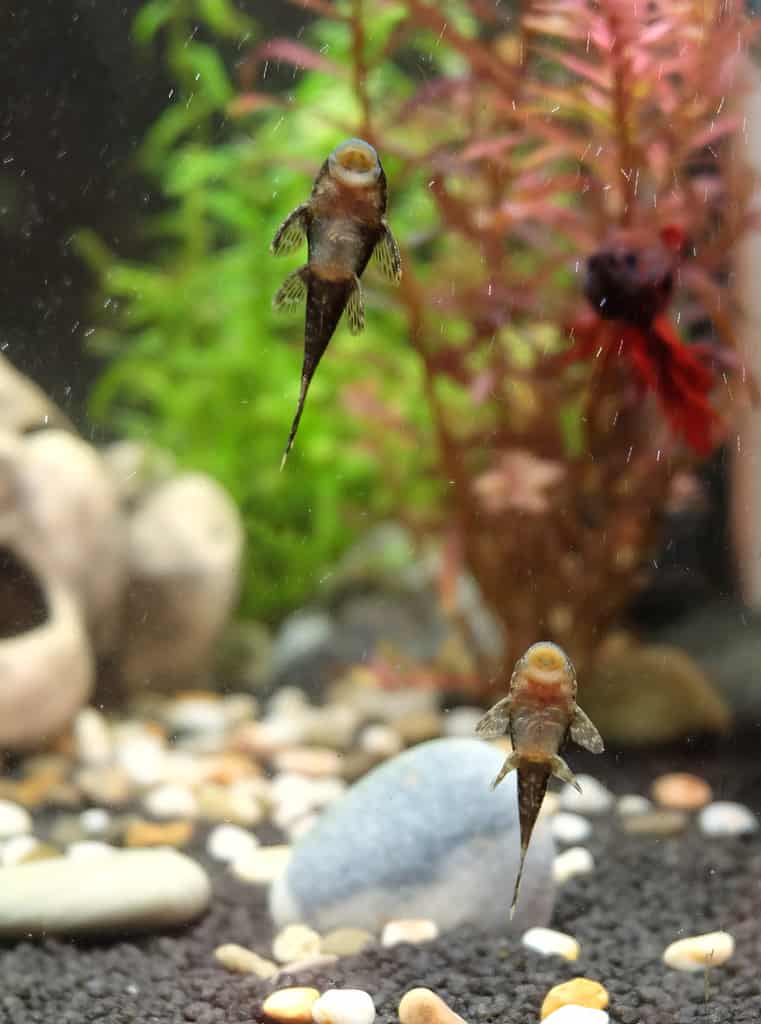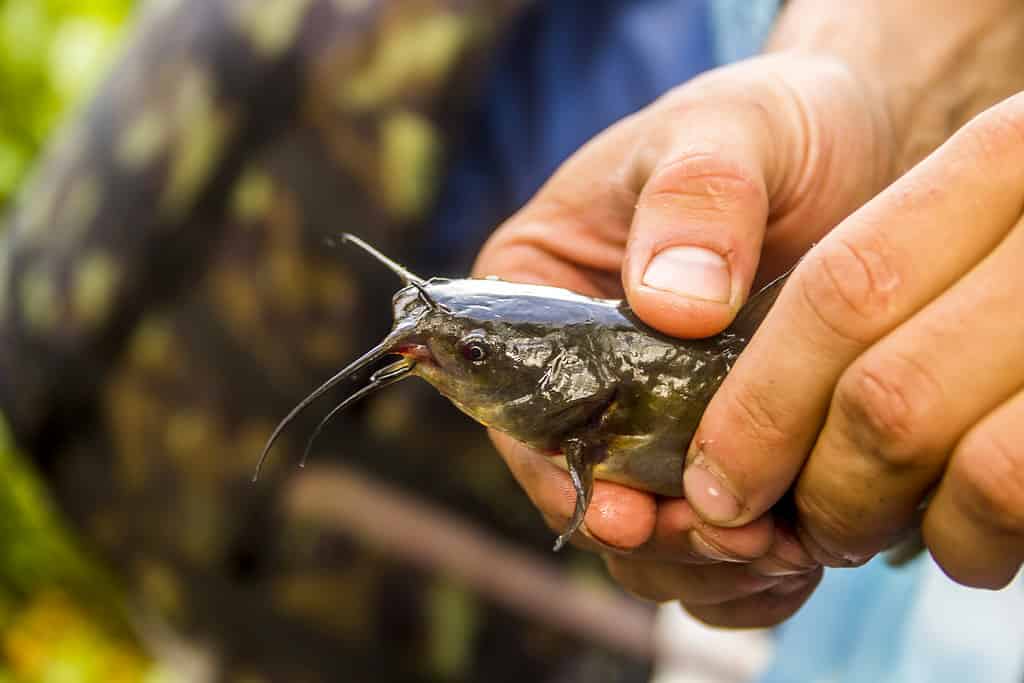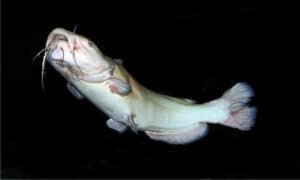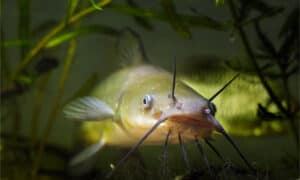The term “catfish” refers to over 3,000 species of freshwater and marine fish in the order Siluriformes. They reside in various aquatic habitats around the world, aside from Antarctica.
Most catfish species are prolific egg layers (oviparous) and do not give birth to live young. Catfish hatch as tiny versions of their parents, and only certain species receive parental care. If you would like to know more about catfish offspring, then this article is for you.
1. Baby Catfish Are Called Fry

Newly hatched Plecostomus babies are called fry.
©OllgaP/iStock via Getty Images
Catfish offspring are known as “fry” and not babies. This is true for many fish species. Catfish hatch from eggs after three to seven days and are fry for the first few weeks of their lives. They can vary in size, but most catfish fry are about an inch long after hatching.
2. Baby Catfish Stay Attached to a Yolk Sac After Hatching

A young brown bullhead fish
(Ameiurus nebulosus)can easily fit onto the palm of your hands.
©Pitroviz/iStock via Getty Images
Catfish fry do not swim freely immediately hatching. They instead stay attached to an egg sac that provides them with nourishment for the next few hours. While the catfish fry are attached to the yolk sac, they finish developing their mouths and other necessary organs they will need when they become free swimming.
Catfish fry do not require any special care during this life stage if you keep them as pets. However, do be wary that larger fish and sometimes their own parents will start eating them.
3. Baby Catfish the Size of an Index Finger Are Called Fingerlings

Catfish fingerlings are about 4 inches long.
©tanakorn Sanguanruang/iStock via Getty Images
When the catfish are about 4 inches long, they are called fingerlings. This term is common when referring to large catfish raised on farms rather than when referring to aquarium catfish species. The catfish fingerlings continue developing to become juveniles.
4. They are Opportunistic Feeders

Most catfish species are omnivores throughout their life, so they enjoy eating various foods.
©staras/Shutterstock.com
Catfish fry are omnivores and opportunistic feeders that enjoy a varied diet. Their diets typically include algae, insects, fish eggs, aquatic plants, and crustaceans. Catfish fry will struggle to eat larger foods, so they prefer to eat smaller foods such as insect larvae, vegetation, and tiny invertebrates. As the catfish fry starts to mature and grow, their diet will change slightly to accommodate their size.
5. It Can Take Up to Three Years for Baby Catfish to Mature

Some catfish can grow very large, ranging from an inch to several feet long.
©Fabian Glantschnig/Shutterstock.com
Most catfish species only become mature at three years old, and the females usually mature faster. The exact age and size at which a catfish reaches maturity is species dependent. Some channel catfish can reach maturity in just two years. Aquarium catfish such as Corydoras and banjo catfish can mature within a few months or once they are 5 to 6 inches long.
6. Baby Catfish Rely on Their Barbels to Sense Their Environment

Catfish have barbels around their faces that function as sensory organs.
©Aleron Val/Shutterstock.com
The whisker-like appendages on catfish have important functions. According to the United States Department of Agriculture (USDA), the main function of a catfish’s barbels is to detect food. These barbels come in handy when catfish need to locate food in murky waters.
Most catfish have about eight barbels surrounding their faces. Baby catfish hatch with very tiny barbels that grow larger and eventually stop growing once they are mature or fully grown.
7. Baby Catfish Do Not Have Scales

Catfish do not have scales at any point in their life stage.
©Dr.ing177/Shutterstock.com
Unlike most fish, catfish do not have overlapping scales and are instead covered with smooth skin (epidermis) and mucous. Their lack of scales can be disadvantageous as it offers them little protection. Aquarium catfish are generally more sensitive to poor water quality issues and not every medication is compatible with their scaleless body.
The photo featured at the top of this post is © tanakorn Sanguanruang/iStock via Getty Images
Thank you for reading! Have some feedback for us? Contact the AZ Animals editorial team.







